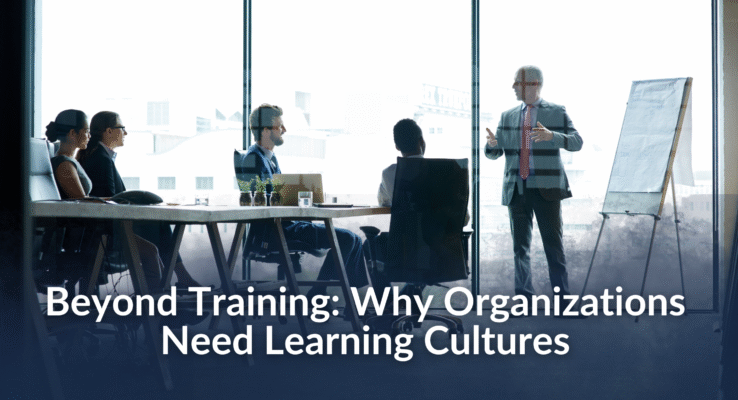Most companies train their people. But few create the kind of environment where a learning culture in organizations allows learning to stick, grow, and reshape how people think and work.
Training teaches. Culture transforms.
Training is important. It builds specific skills and helps teams keep pace with evolving demands. But on its own, it’s episodic. You sign up, show up, maybe take notes, then go back to your regular day. Without a learning culture to sustain and expand that knowledge, much of it fades.
A learning culture is the engine that keeps curiosity, growth, and experimentation alive long after the workshop ends. It’s not just about knowledge transfer. It’s about how people relate to learning itself.
Why it matters more than ever
The ability to learn fast and adapt well has become a strategic advantage. In fact, research shows that companies with strong learning cultures consistently outperform their peers in innovation and employee retention (Harvard Business Review). Organizations that foster a learning culture:
♦ Build resilience during uncertainty
♦ Develop stronger, more capable leaders
♦ Encourage innovation from all levels
♦ Retain talent that values growth and purpose
A strong learning culture in organizations supports lasting business performance – not just momentary learning gains. These aren’t soft benefits. They directly impact performance, engagement, and business outcomes.
What a learning culture actually looks like
It’s not ping-pong tables or online course subscriptions. It’s how a company thinks about mistakes. How managers talk about growth. How teams reflect on what worked and what didn’t.
In strong learning cultures:
♦ Leaders model curiosity and vulnerability
♦ Feedback is frequent, constructive, and safe
♦ Time is protected for reflection and experimentation
♦ Learning is tied to real business challenges
♦ Colleagues learn from each other, not just from experts
At Solutional, we’ve seen this work when organizations move beyond traditional workshops and start creating learning ecosystems. Microlearning plays a big role here. It breaks down big ideas into digestible, focused insights people can apply immediately. Learning becomes continuous, not confined to a calendar invite.
Gamification adds energy and accountability. It turns learning into a dynamic experience, where progress is visible and small wins build momentum. It’s not about points or badges. It’s about sparking motivation and making the learning journey enjoyable.
Social learning is the glue that holds it all together. When people exchange ideas, reflect out loud, or learn by observing others, it deepens understanding. It also builds a sense of ownership. Learning becomes personal, shared, and rooted in real work.
How to move from training to transformation
Shifting to a learning culture doesn’t happen through a single initiative. It starts with intention and shows up in the day-to-day. Here are some moves that matter:
♦ Reframe learning as a mindset, not an event
♦ Invest in coaching and peer learning
♦ Build reflection into projects and processes
♦ Reward those who take learning risks, not just those who get it right
♦ Recognize and celebrate behaviors that reinforce a learning culture in organizations
♦ Use tools like Microlearning, Gamification, and Social Learning to embed learning into real workflows
Organizations that do this well aren’t just teaching people what to do. They’re helping them become better thinkers, collaborators, and leaders.
The payoff? Long-term capability. Not just compliance.
If your goal is to prepare your people for complexity, uncertainty, and opportunity, then training alone won’t cut it. It’s time to think bigger. Build the kind of culture where learning is not a break from work but a way of working.
That’s where transformation truly begins.
